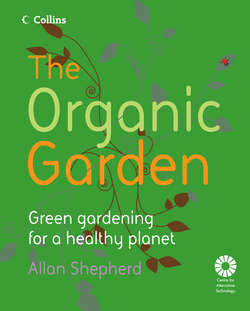Читать книгу The Organic Garden - Allan Shepherd - Страница 29
Soft landscaping vs. hard landscaping
ОглавлениеIt is possible to garden entirely with so-called soft landscapes. Soft landscapes are created using living materials and include lawns and grass paths, hedges made using trees, shrubs and other plants, as well as arbours and other living structures made out of trees such as willow. If it is managed sensitively, soft landscaping is mostly more environmentally benign than hard landscaping. Hedges need to be trimmed responsibly and regularly – preferably using power-free tools or power tools that use renewable energy – and can produce a number of useful by-products, such as fruit, poles for staking peas and beans, decorative material, and so on. Lawns and grass paths are lovely to walk on and fairly low maintenance, but be careful how you cut them. A study funded by the Swedish Environment Protection Agency found that using a four-horsepower lawn mower for an hour caused the same amount of pollution as driving a car 150 kilometres. In preference use an electric mower or, even better, a non-powered mower.
Hard landscaping is made from quarried materials or cut from timber and includes decking, walls, fencing and hard paths. Common materials include stone, cut timber, concrete, brick, plastic, metal and glass. Wood is the most environmentally benign material if it is cut from responsibly managed woodland (see information on FSC approval, pages 26–27) or, even better, if it is reclaimed waste wood. Avoid MDF (medium-density fibreboard). It is made using wood and a bonding agent called urea-formaldehyde, a dangerous material described by some as the ‘asbestos of the 90s’. In preference use untreated wood.
Quarried stone usually comes in its raw unprocessed form. Quarrying is hugely destructive of local environments so look for reclaimed materials if you can. If you can’t, use materials that are local and traditional to your area. Unprocessed materials are generally better for the environment because processing usually involves the use of more energy. A prime example is cement, a major component of concrete. Cement has to be burned at 1500°C (worldwide the cement industry creates 10 per cent of all CO2 emissions).
The range of reprocessed materials available to the gardener has increased over the past few years: look out for paving materials made out of reclaimed brick, chipped slate, recycled glass and reclaimed aggregates. A lot of energy is needed to produce glass, and likewise plastic, but both materials are used extensively by the gardener to capture heat and speed up the growth rates of plants. Old windows can be recycled into cloches and although polytunnel plastic wears out after a few years it can then be turned into mini cloches or laid on the soil to heat it up in early spring. Plastic is used extensively to make water butts, watering cans, compost bins, raised beds and other common garden objects. Look for products that are 100 per cent recycled.
